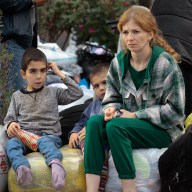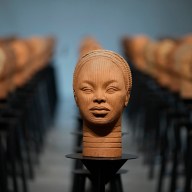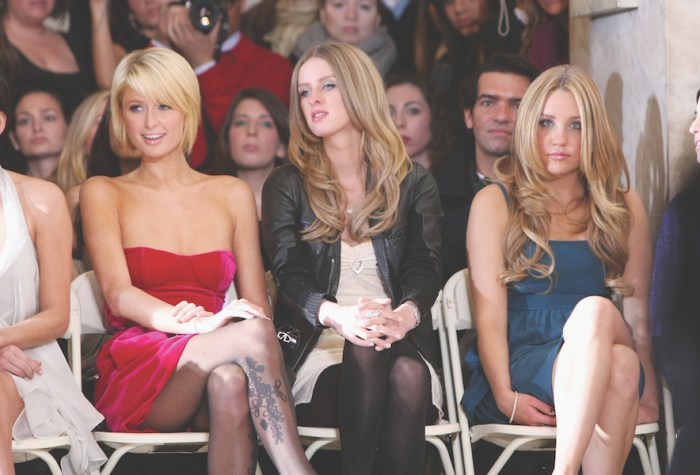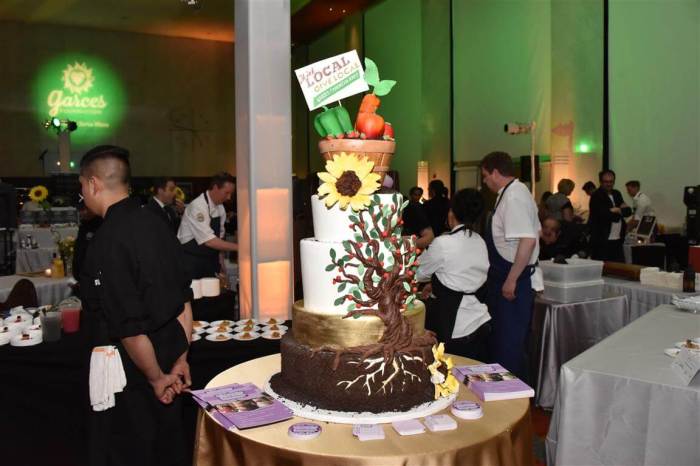Photographer Anthony Karen said he first became fascinated with Haiti after seeing a documentary in 1982 about the United States’ role in eradicating the Creole pig in Haiti. “The Creole pig was a crucial element to the provincial farmer, and it also served as a powerful offering during Vodou rituals when attempting to appease the spirits,” explained Karen. “The documentary showed glimpses of various Vodou rituals and portrayed them as very dark and cloaked in mystery; that combined with Haiti being ranked the most dangerous place in the Western Hemisphere piqued my interest enough for me to go.”
Karen has traveled to Haiti several times since the 1990s and had the opportunity to see Vodou, better known in popular culture as voodoo, rituals up close. Karen shared some of his photos from Vodou rituals in Haiti and talked to Metro about his experiences looking in on the ceremonies.
Metro: Did you ever feel moved or spooked during the Vodou rituals?
Karen: I was never “spooked,” but I have seen things that surprised me as far a spiritual possessions. I find the music to be especially moving.
How common is Vodou in Haiti today?
There was a decline following the earthquake as some blamed the practice for the seemingly endless occurrences of natural disasters in the most recent years. As a result, the earthquake was definitely a catalyst that prompted such acts as the murdering of several Houngans (Vodou priest) and a cry out for proscription by those of other faiths.
Today, things have somewhat calmed and many are returning to Vodou for comfort, strength and self-empowerment, in asking for the help and assistance of their ancestors.
Can you tell me more about animal sacrifices and the drinking of blood during these rituals?
The drinking of blood is honoring the gift that particular animal has given to you with its life, including strengthening your spirit with its own. It is not exclusive to Vodou, one example being that just this past July, I was invited to partake in a sacred Buffalo ritual with the Lakota in South Dakota and drank the blood of a Buffalo.
In Haiti, the sacrifice of animals in various rituals, rites, magical charms, in general all spiritual work, is part of one of the strong legacies left by the different traditions and practices of the various African tribes or nations who have been established on the island. The Republic of Haiti is an amalgamation of the first inhabitants of the land, the indigenous Taino, the French, the African, etc. The practice of sacrificing animals is a sacred ritual, which means feeding the spiritual bodies and entities through the angels of the earth.
It is like recycling and regrouping the various energies to strengthen the body and the soul to assist in living this human experience.
The meat of the animal is then shared within that family of Vodouisaints or community, nothing is wasted.
But the practice of animal sacrifice isn’t exclusive to Vodou, either, as it’s also seen even today in less stigmatized faiths as Judaism (practice of Kapparot) and Hinduism. There is also the Armenian Christian tradition of matagh, where a lamb or rooster is sacrificed to God.
Also, in Vodou, blood and sacrifice aren’t always the most important aspects of the religion. The Vodouisant also honors nature as a whole, while including, specifically, trees, mountains, plants and stones–to name a few–in his/her work.
What do most people usually think about Vodou that you found to be untrue?
Vodou is feared because of ignorance, and it’s unfortunate that it’s chastised as much as it is, as I find it to be one of the most organic forms of spirituality I’ve witnessed. And as with any religion, there is a dark side to Vodou, when channeled through a Bokor (a sorcerer of sorts), but this is not common practice, and in fact it’s extremely rare and often looked down upon by many Vodouisants themselves.
Were you only a photographer? Or did you also participate?
My first experience was in 1998 and I was an observer … not quite comfortable with getting into someone’s personal space during a private moment with a camera yet, but I did take a few images. I couldn’t tell you exactly how many rituals and ceremonies I’ve experienced over the years, but it is more than I can count. My foundation is Catholicism, but I don’t believe in religious tunnel vision, so I guess you can define me as spiritual. With that, yes I have participated in situations I felt comfortable with and I took photographs when inspired to do so.
To what social strata do Vodou worshippers belong? Do people that believe in Vodou tend to be poor?
Unfortunately, Haiti is one of the poorest places on the Western Hemisphere, but you can’t define any religion based on an economic standard. There are wealthy and poor just like with any other faith. Also, the practice of Vodou isn’t bound to Haiti alone, for example; you can find plenty of worshipers in places like NY, Florida and Montreal.
Learn more about Anthony Karen at his website: AnthonyKaren.com
Follow Andrea Park on Twitter: @andreapark

















